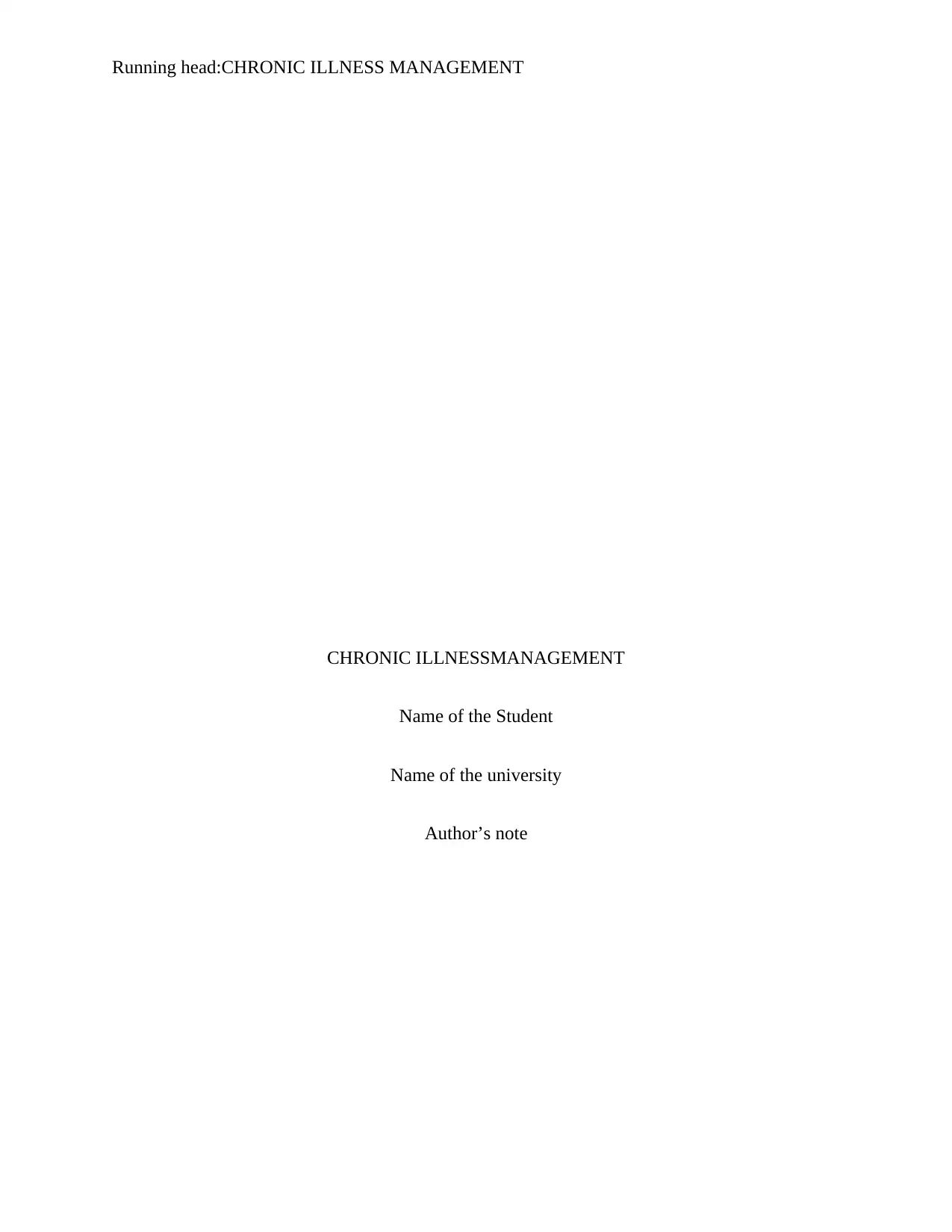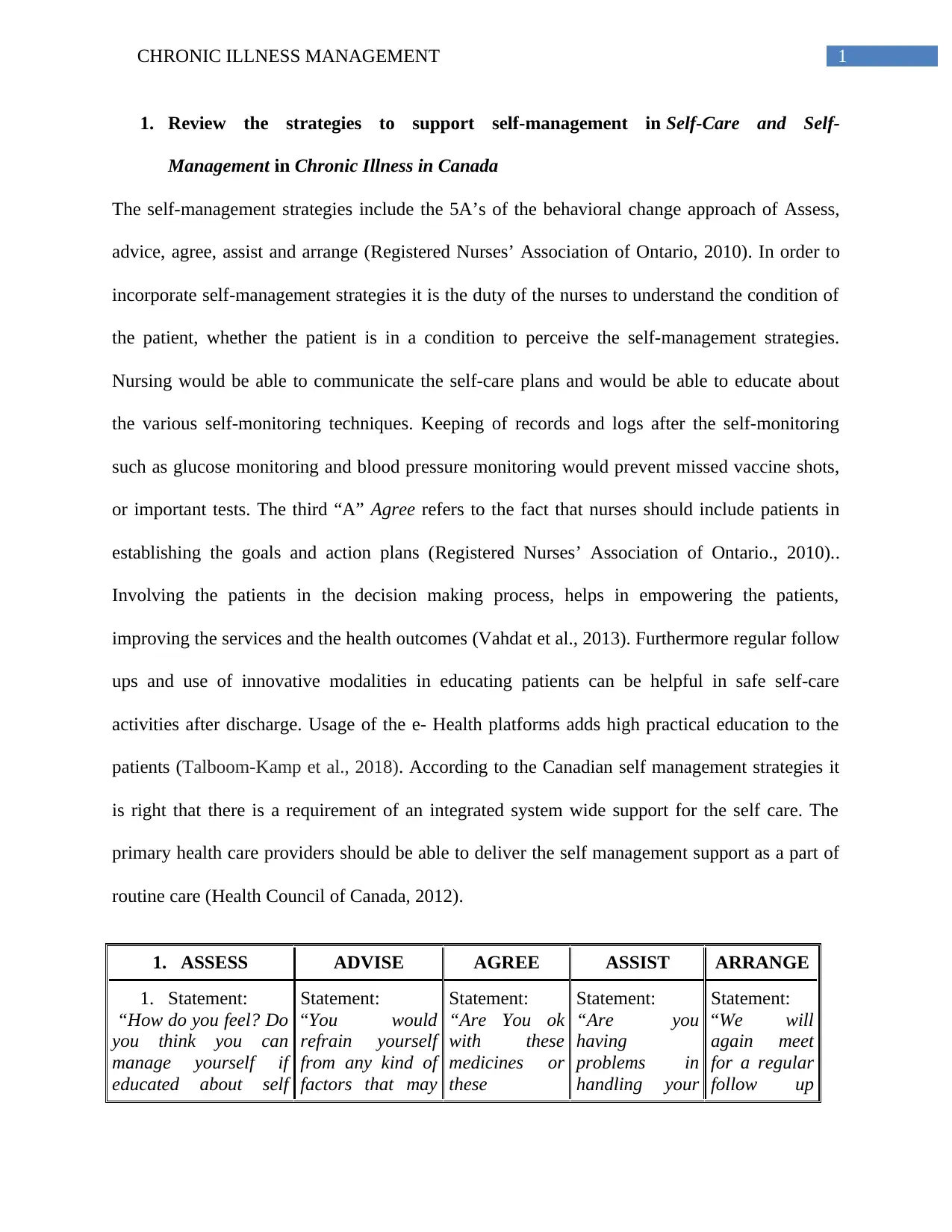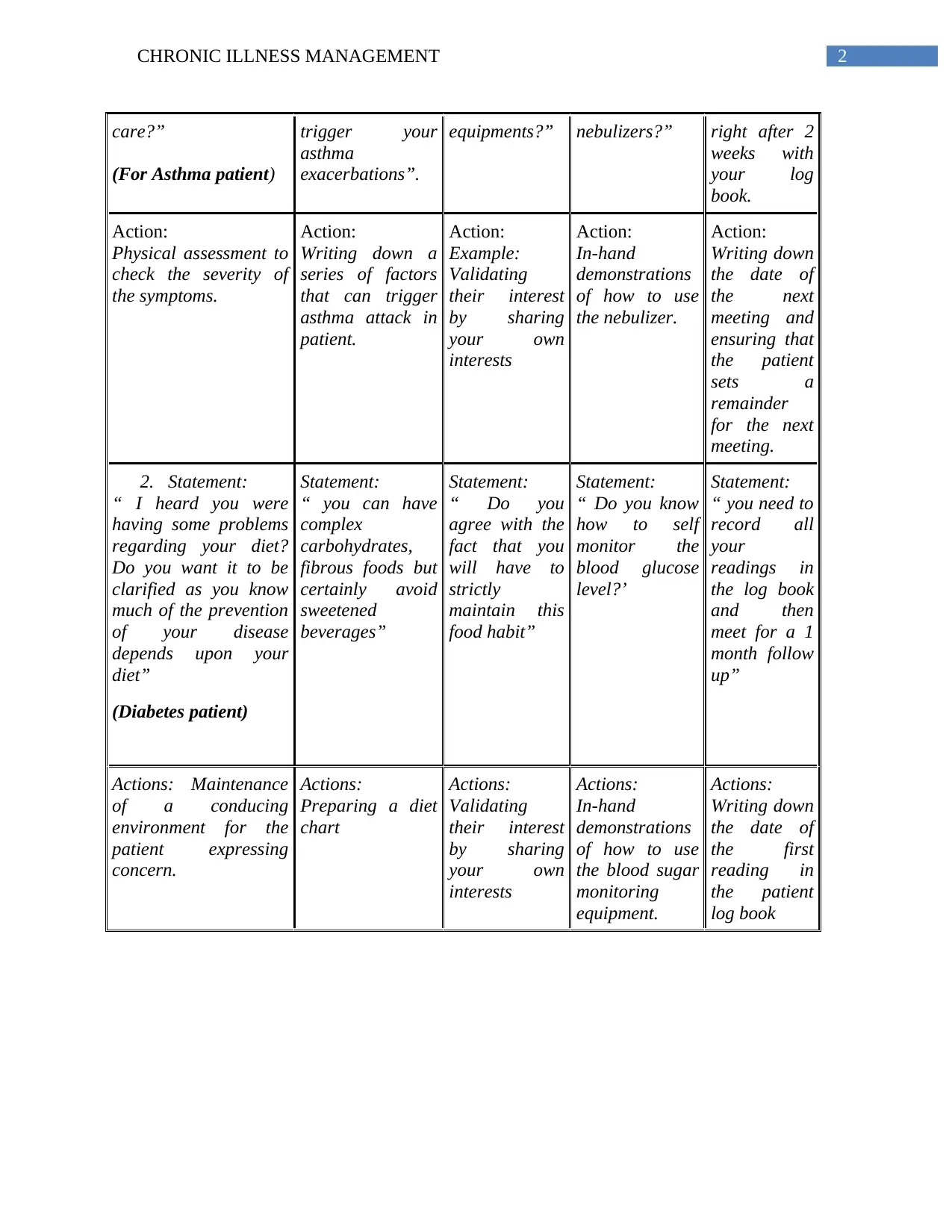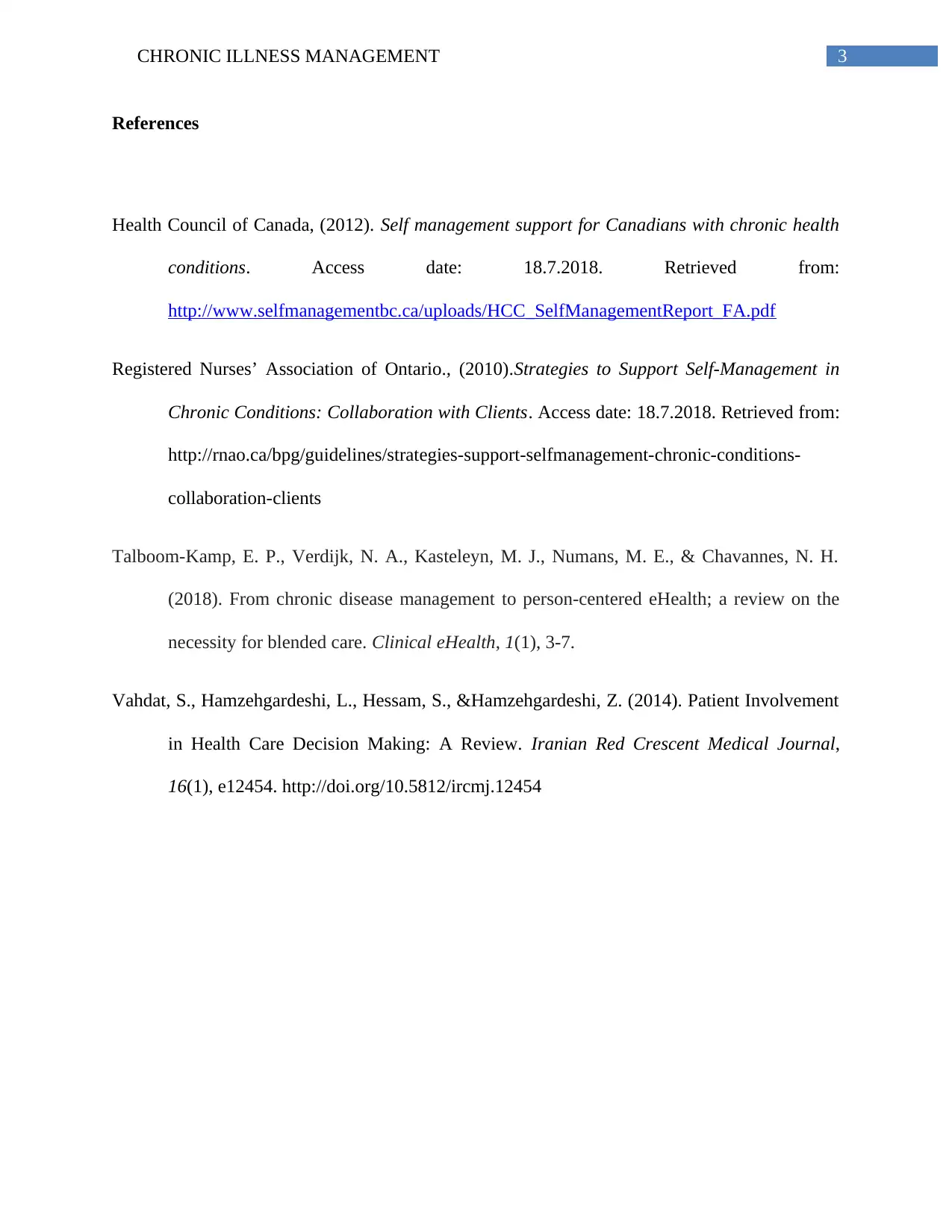Strategies to Support Self-Management in Chronic Illness in Canada
VerifiedAdded on 2023/06/10
|4
|847
|127
AI Summary
This article discusses the self-management strategies for chronic illness in Canada, including the 5A's of the behavioral change approach. It explains how nurses can educate patients about self-monitoring techniques and involve them in decision making. The article also highlights the importance of regular follow-ups and innovative modalities in educating patients. The subject is chronic illness management, and the course code, name, and university are not mentioned.
Contribute Materials
Your contribution can guide someone’s learning journey. Share your
documents today.
1 out of 4










![[object Object]](/_next/static/media/star-bottom.7253800d.svg)